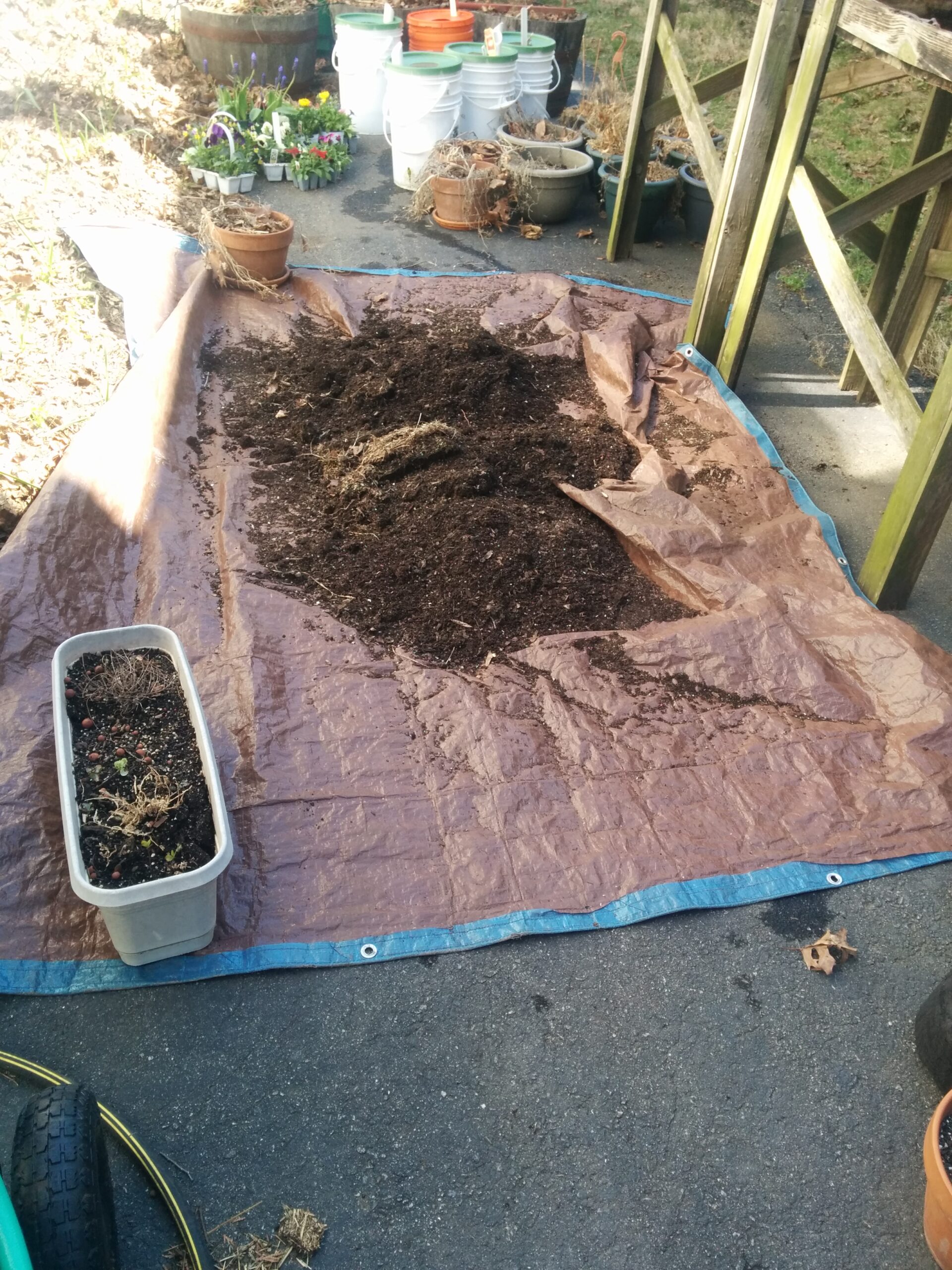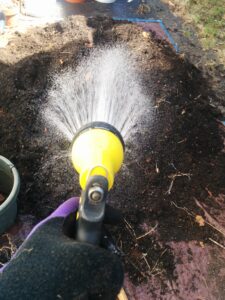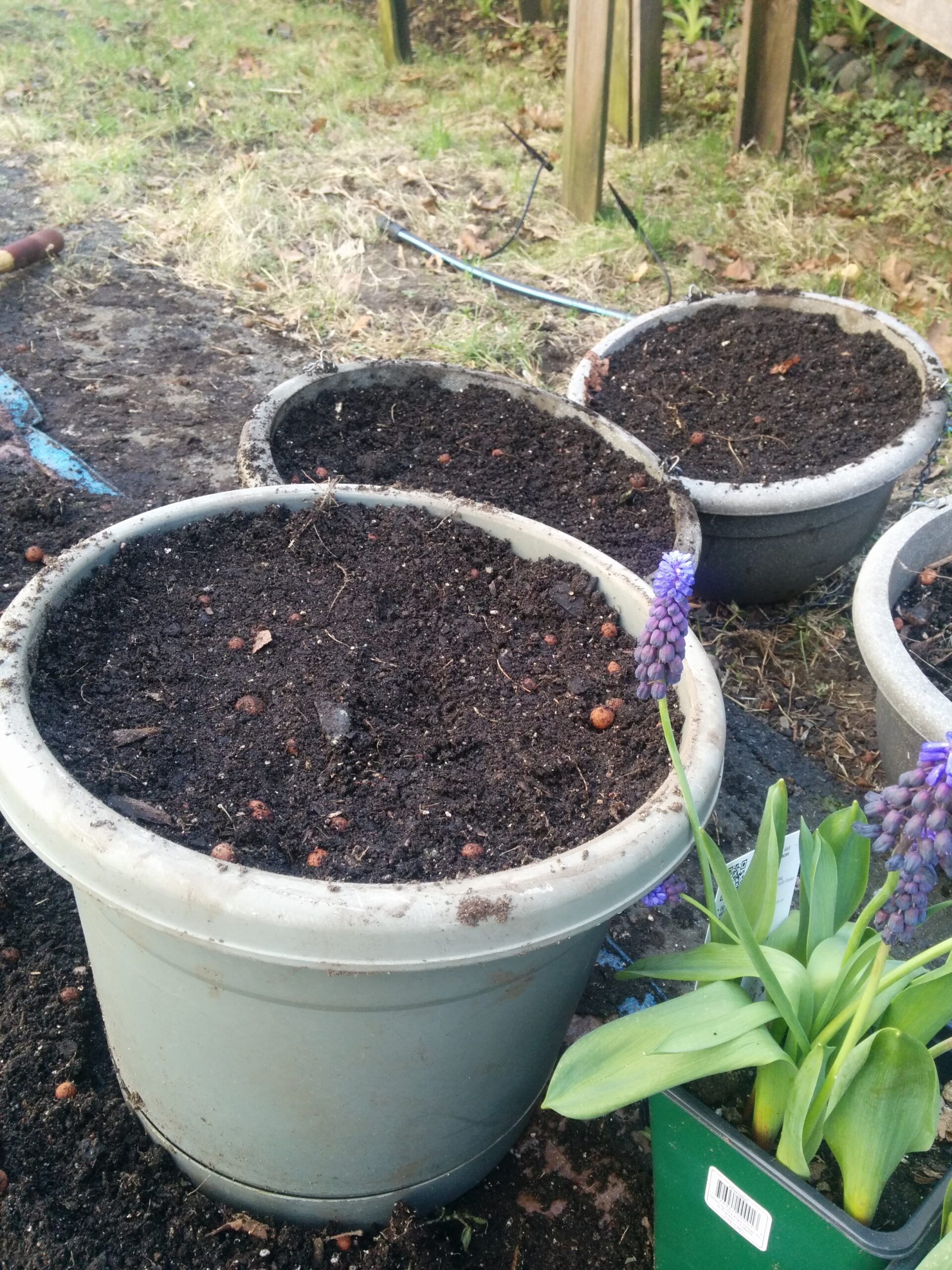
Garden Time: Getting your hands dirty
Soil, not to be confused with dirt, is the life blood of a garden. Dirt is dead and lifeless, but within soil is a complex, living ecosystem that keeps plants healthy. Nutrition for vegetables comes from the soil. Having healthy soil is important to an edible garden, but if you are container gardening, it is difficult to maintain a healthy, thriving ecosystem from year to year.

The roots of plants absorb food, water, nutrients and minerals through soil. They spread into soil in search of nutrition forming a plant’s communications web and supply network. The plant above ground tells the root system what it needs and the roots below ground absorb it from the soil. All of the details of soil composition are far too complex to detail here, but there are important elements gardeners should understand. Organic matter is the most important element in soil. Unfortunately, plants cannot digest simple organic matter like food scraps and leaves without a help from bacteria and fungus microorganisms. These organisms decompose or compost simple organic matter into readily available plant nutrition. They also aerate the soil allowing roots to expand and water and air to penetrate down to the roots. Together, organic matter and microorganisms are the heart of the nutrition in soil providing not only the nitrogen, phosphorous and potassium critical to plant health, but also other trace elements such as magnesium, calcium and iron.
Fertilizers provide basic nutritional needs to a plant and they are useful during the growing season. The numbers on fertilizers indicate the percent of soluble nitrogen, phosphorous and potassium available for plant absorbsion. These elements are the foundation of plant nutrition, but they are not a complete replacement for healthy soil. Think of nitrogen, phosphorous and potassium as the plant nutrition equivalents of proteins, carbohydrates and fats in human nutrition. A human can survive with supplement that provides these basics, but things such as vitamins and minerals contribute. For plants, fertilizers are like supplements providing basics, but a plant also needs vitamins and minerals. Furthermore, the vitamins and minerals valued in edible plants come from the soil.
nutrition, but they are not a complete replacement for healthy soil. Think of nitrogen, phosphorous and potassium as the plant nutrition equivalents of proteins, carbohydrates and fats in human nutrition. A human can survive with supplement that provides these basics, but things such as vitamins and minerals contribute. For plants, fertilizers are like supplements providing basics, but a plant also needs vitamins and minerals. Furthermore, the vitamins and minerals valued in edible plants come from the soil.
A container garden has little access to the outside world. As such, it is impossible to maintain container garden soil health indefinitely without adding nutrition. During the growing season, side dressings of compost and fertilizers help supplement plant nutrition. However, it is a great opportunity to replenish soil when starting fresh plants and seedlings in the spring.
 With new containers, it is easy to get plants off to a good start. Potting soil is available by the bag at garden stores. Rather than simply using a potting soil alone, mix one part of compost to every four parts of soil. Soil and compost are less expensive in bulk bags of 40 pounds or more. Many indoor gardeners can save money buy bulk and sharing the cost neighbors and friends. It may also be less expensive to make a soil mix from scratch such as the one recommended in All New Square Foot Gardening by Mel Bartholomew. For best results, an edible plant garden should get organic soil. Annually refresh containers full of soil from previous years with a similar method by removing the old soil and blending it with compost. For containers with living plants, top off with a compost-soil mix or gently remove the plant from the container, loosen the roots and add a compost-soil mix to the bottom.
With new containers, it is easy to get plants off to a good start. Potting soil is available by the bag at garden stores. Rather than simply using a potting soil alone, mix one part of compost to every four parts of soil. Soil and compost are less expensive in bulk bags of 40 pounds or more. Many indoor gardeners can save money buy bulk and sharing the cost neighbors and friends. It may also be less expensive to make a soil mix from scratch such as the one recommended in All New Square Foot Gardening by Mel Bartholomew. For best results, an edible plant garden should get organic soil. Annually refresh containers full of soil from previous years with a similar method by removing the old soil and blending it with compost. For containers with living plants, top off with a compost-soil mix or gently remove the plant from the container, loosen the roots and add a compost-soil mix to the bottom.
 While most unsterilized soils should be full of microorganisms, it is a good idea to provide soil with additional microorganisms. Commercially available microorganism blends in powder and liquid form are available at most hydroponics supply stores. It does not take much of the blend to provide soil with a healthy colony of microorganisms. Typically, a quarter teaspoon of powdered blend per container is all that is necessary. The soil is ready to go into containers and provide plants with a healthy base of nutrition that smells fresh and earthy. Do not overfill containers or pack the soil as roots need space to expand and support larger, bushier plants. Seedlings should have their first two real leaves before transplanting. Place filled containers in a sunny spot and keep the soil slightly moist.
While most unsterilized soils should be full of microorganisms, it is a good idea to provide soil with additional microorganisms. Commercially available microorganism blends in powder and liquid form are available at most hydroponics supply stores. It does not take much of the blend to provide soil with a healthy colony of microorganisms. Typically, a quarter teaspoon of powdered blend per container is all that is necessary. The soil is ready to go into containers and provide plants with a healthy base of nutrition that smells fresh and earthy. Do not overfill containers or pack the soil as roots need space to expand and support larger, bushier plants. Seedlings should have their first two real leaves before transplanting. Place filled containers in a sunny spot and keep the soil slightly moist.
As a complex ecosystem, understanding the many benefits of healthy, thriving soils is not necessity only for gardeners and farmers. Soil nutrition is relevant for all types of food professionals. To learn about the wonderful ecosystem of soil, the following two books by Jeff Lowenfels are recommended:
- Teaming with Microbes: The Organic Gardener’s Guide to the Soil Food Web
- Teaming with Nutrients: The Organic Gardener’s Guide to Optimizing Nutrition
Leave a Reply